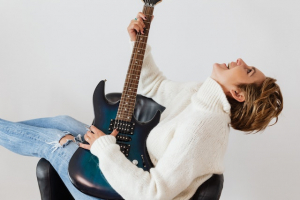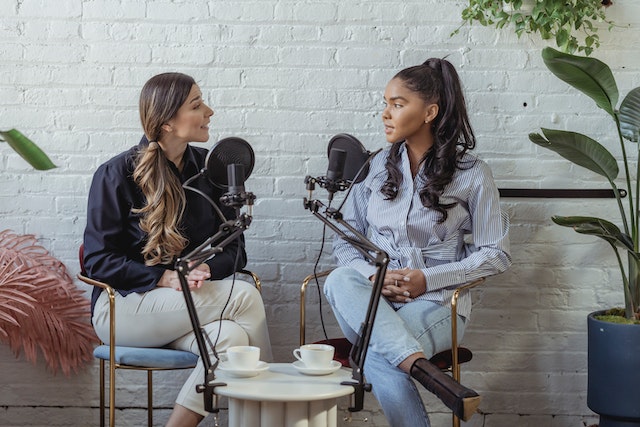
Thinking about how to start a podcast? Like social media, podcasts are leveling the playing field when it comes to how people share their ideas and opinions with the rest of the world. Each episode in a thoughtfully crafted podcast series will gain more traction and earn more listeners who want to be both entertained and informed. Part of what’s made the platform so incredibly popular is not only the variety in content but in the simplicity of how to create a podcast. You don’t need an engineering degree, and there are very few obstacles to distribution.
If you’re wondering how to create a successful podcast, take a look at the equipment we recommend and our tips for keeping your audience inspired and entertained.
What Do You Need to Start a Podcast?
1. A great idea and a unique perspective
Having an original idea or a viewpoint that’s naturally connected to your passions or personal experience is essential. Be critical. The podcast market is fairly saturated with mediocre content. Ask yourself the hard questions: Why does your podcast matter? What makes it different? Will your listeners learn something on your show that they can’t learn somewhere else? Are you offering new perspectives and stories they won’t hear elsewhere? Is someone else already doing what you want to do?
Once you’ve considered all those questions, think about other podcasters you admire and start analyzing their mic techniques and interview style. Review recordings of yourself, critique your style, and continually look for ways to interact with and entertain your audience.
2. A professional-quality microphone
The primary piece of equipment you’ll want to invest in is a microphone. You’ll probably start out with a simple mic that has a USB connection, but after you’ve been at it a while, you may want to level up and invest in a microphone with an XLR hookup. XLR mics will also require an audio mixer, which gives you additional control over your recording.
There are also two types of microphones: dynamic and condenser. Dynamic mics are full-bodied with less feedback – that’s perfect if you’re not recording in a soundproof studio. They’re also less expensive than condenser mics (but lack the dynamic range). Condenser microphones are more costly and more sensitive with a heightened dynamic range.
We love the MXL BCD-1, an end-address dynamic microphone with warm, rich tones designed to make vocals stand out in any performance or recording. The built-in swivel mount allows for perfect positioning when combined with the optional MXL BCD-Stand.
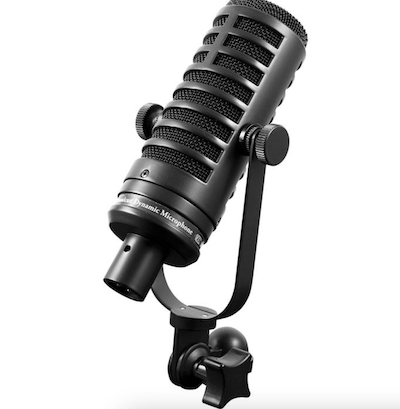
>> Get the MXL BCD-1 Dynamic Podcast Microphone, Black <<
3. A computer
As long as your computer was manufactured in the last few years, it’s probably fast enough to manage recording a podcast. You don’t necessarily need to invest in an entirely new system right off the bat. Work with what you’ve got and if you feel it’s not up for the job, look for a new computer with additional memory and a faster processor.
4. A mixer
If you use an XLR mic like the MXL BCD-1, you’ll need to pick up an audio mixer to use with it. Mixers are available in a variety of price points and with different numbers of channels. You'll need a channel for each microphone you plan to use with the mixer. Take a look at the Mackie ProFX6v3 Professional Effects Mixer, the ultimate affordable solution for live home recording and content creators. This mixer features Onyx mic preamps that offer 60 dB of headroom and 24 built-in FX. You can record your tracks in 24-Bit/192kHz quality with 2x4 USB I/O and zero-latency hardware monitoring. And as a bonus? Waveform OEM recording software/plugin packages are included.
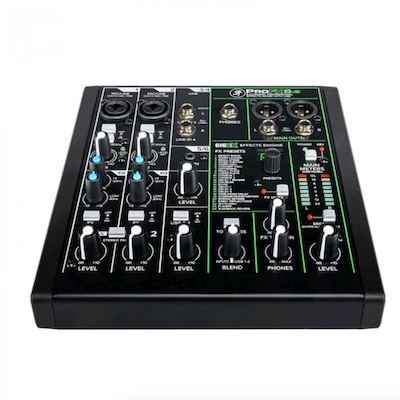 >> Get the Mackie ProFXv3 Series, 6-Channel Professional Effects Mixer <<
>> Get the Mackie ProFXv3 Series, 6-Channel Professional Effects Mixer <<
5. The right software
You’ll need the right software to record and edit your podcast. Start with one of the low-cost or free packages. GarageBand comes pre-installed on Macs, and Audacity is free and multi-platform. You can also check out Adobe Audition for a monthly subscription. Download Skype to conduct interviews with long-distance guests using a recording plugin. Eventually, when you have more experience or when your podcast skyrockets, you can upgrade the software.
6. A pair of noise-canceling headphones
A high-quality set of noise-canceling headphones will allow you to plug into your recording. Take a look at the SENNHEISER HD 4.40 Around Ear Bluetooth Wireless Headphones, which offer a snug fit around the ears for a well-balanced, amazingly detailed sound with dynamic bass (without any annoying background noise or humming). The soft leatherette-covered ear pads provide exceptional wearing comfort for long listening sessions. The HD 4.40BT Wireless is equipped with Bluetooth 4.0 featuring aptX codex compatibility providing wireless freedom of movement and exceptional sound quality — great for on-the-go recording.
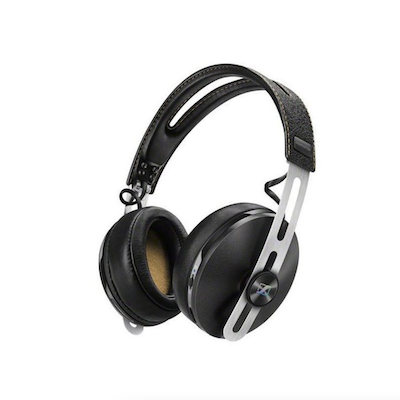
>> Get SENNHEISER HD 4.40 Around Ear Bluetooth Wireless Headphones <<
The Takeaway
While it helps to have a reliable set of recording tools available, ultimately, creating a successful podcast is less about the equipment and more about the entertainment and educational value you provide to your listeners. The best podcasts make listeners feel like they’re sitting in the studio or room with the guests and hosts. Either way, it doesn’t have to cost a lot to create a podcast channel as long as you’ve made a sound investment in hard work and research.


